Skip over navigation
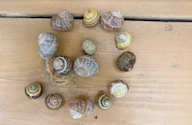
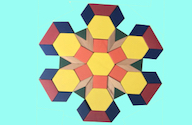
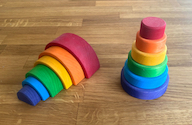
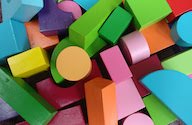
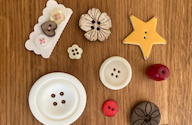
Or search by topic
Number and algebra
Geometry and measure
Probability and statistics
Working mathematically
Advanced mathematics
For younger learners
Shapes in the Bag
Age 3 to 5
Sorting and describing using mathematical properties such as size and shape
Understanding the characteristics of 2D and 3D shapes
Understanding the characteristics of 2D and 3D shapes





Children often enjoy puzzling and guessing games.
Adults could provide a bag containing assorted shapes and, when a suitable opportunity arises, encourage the children to play a game.
Adults could provide a bag containing assorted shapes and, when a suitable opportunity arises, encourage the children to play a game.
The Activity
Children put their hand(s) in a bag to choose one of the shapes inside. By exploring the shape with their hands while it is still in the bag, they try to reason what shape it is, then bring it out to see their choice.
Children put their hand(s) in a bag to choose one of the shapes inside. By exploring the shape with their hands while it is still in the bag, they try to reason what shape it is, then bring it out to see their choice.
Encouraging mathematical thinking and reasoning:
Describing
(While hands are still in the bag)
Tell me about the shape you have found.
(While hands are still in the bag)
Tell me about the shape you have found.
Reasoning
Why do you think it could be a ...?
Is there another shape it could be?
Why do you think it could be a ...?
Is there another shape it could be?
Opening Out
Put many examples of shapes with the same name into the bag.
Can you find others in the bag that have the same name?
How many are there that have the same name?
Put many examples of shapes with the same name into the bag.
Can you find others in the bag that have the same name?
How many are there that have the same name?
Recording
How could you remember what you all found in the bag today?
Do you want to make a label for your collection and show how many there are?
How could you remember what you all found in the bag today?
Do you want to make a label for your collection and show how many there are?
The Mathematical Journey
Properties of shapes:
- using everyday language such as curved, pointy, straight and wiggly to describe shapes
- progressing to using mathematical language such as corner, side, circle, square, rectangle, triangle and oblong, having analysed the properties of the shapes involved
- counting the sides and corners of the shapes they choose
Development and Variation
Encourage children to notice shapes around them, both in the setting and beyond. If they walk around with an example of a particular shape, they may find it easier to discover more of that shape in the environment. This offers opportunities for developing language associated with comparing and contrasting (i.e. 'what is the same and what is different?'). You may like to ask them to take photographs of the shapes they see. If printed, the photographs could become a sorting game back in your setting.
You could adapt this game for all sorts of purposes. For example, why not fill a bag with numbers for the children to identify without looking?
Encourage children to notice shapes around them, both in the setting and beyond. If they walk around with an example of a particular shape, they may find it easier to discover more of that shape in the environment. This offers opportunities for developing language associated with comparing and contrasting (i.e. 'what is the same and what is different?'). You may like to ask them to take photographs of the shapes they see. If printed, the photographs could become a sorting game back in your setting.
You could adapt this game for all sorts of purposes. For example, why not fill a bag with numbers for the children to identify without looking?
Resources
A collection of shapes - try to include a range of different types and, if possible, a range of different materials from which they are made (ideally the shapes should contain examples that children might have already come across in the setting as well as those which are likely to be new to them).
An attractive bag that is deep enough to contain all the shapes without the children being able to take a peek.
A camera might be useful for taking pictures.

A collection of shapes - try to include a range of different types and, if possible, a range of different materials from which they are made (ideally the shapes should contain examples that children might have already come across in the setting as well as those which are likely to be new to them).
An attractive bag that is deep enough to contain all the shapes without the children being able to take a peek.
A camera might be useful for taking pictures.
Download a PDF of this resource.
With thanks to Kirsty Lombari at Ludwick Nursery School who was the inspiration for this activity.


